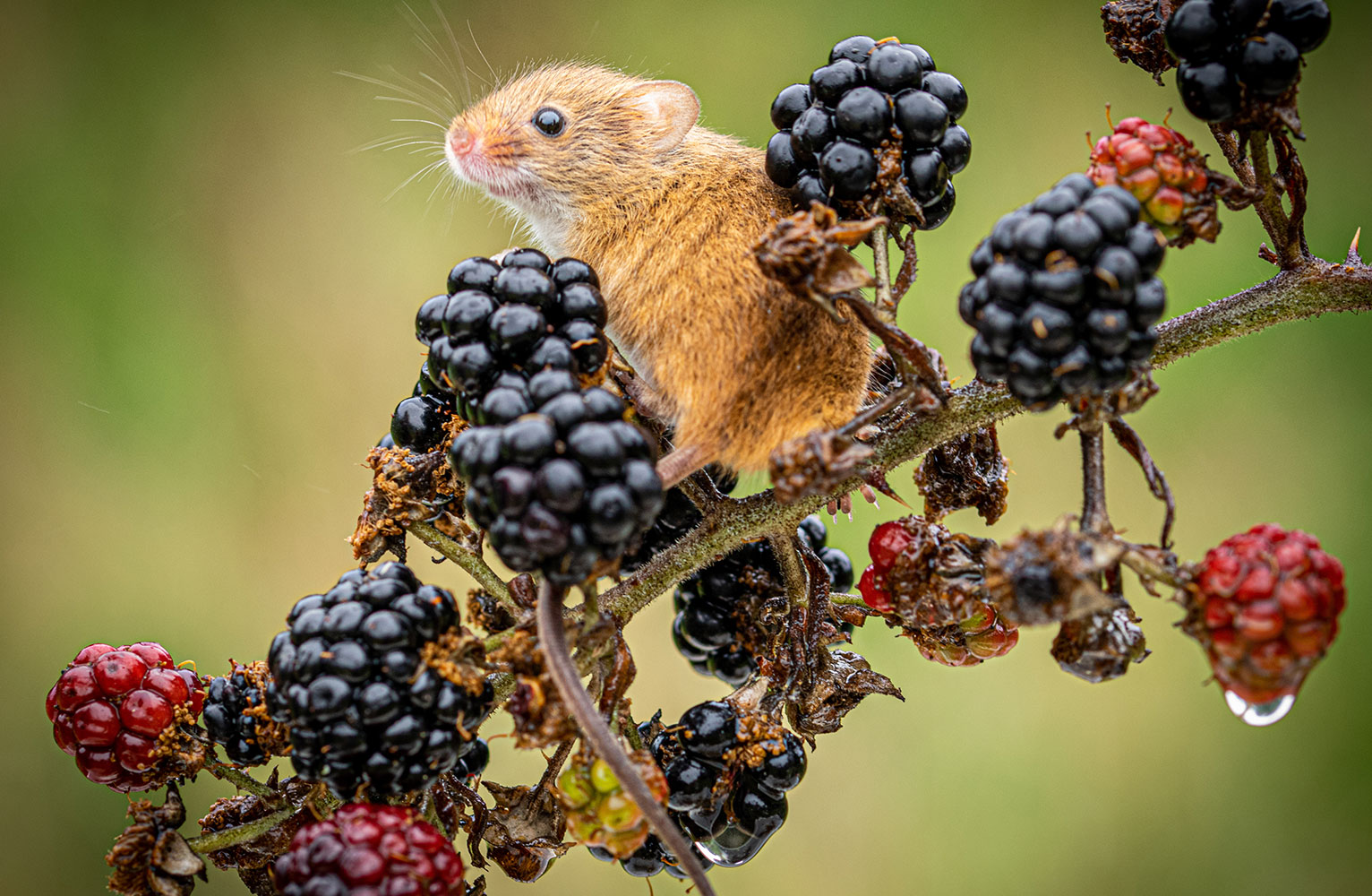
Harvest mice are tiny – barely the size of three blackberries 🥹
Native animals play a critical role in North Carolina ecosystems. As Rada Petric and the research team study the effects of the Stinking Quarter Tributary watershed restoration, they will monitor whether small animals, including the ones below, are better able to thrive and occupy the area in greater numbers.
Mammals

White-footed ⬆️ and harvest mice ⬇️
These native mice play a crucial role in the ecosystem, serving as predators who eat a number of native plants and insects and prey for native birds and snakes.


Hispid cotton rat
Much like mice, hispid cotton rats are seed dispensers and prey for other species.
Bats
Wetlands are important foraging grounds for bats, so the team hopes that the watershed restoration will increase bat presence in the area. All native North Carolina bats are insect-eaters and provide vital pest control services, with each bat consuming roughly their body weight in insect mass each night.

Tri-colored bat
The smallest bat species native to North America, tri-colored bats are the ideal size for consuming small pest insects such as mosquitos. They are the first species to enter into a winter hibernaculum and the last species to leave in the spring. They are currently under review by the U.S. Fish and Wildlife Service for listing under the Endangered Species Act.
Birds

Kentucky warbler
A socially monogamous species, Kentucky warbler males and females define territory together and jointly raise their young. Parents separate when the young fledge.
Reptiles
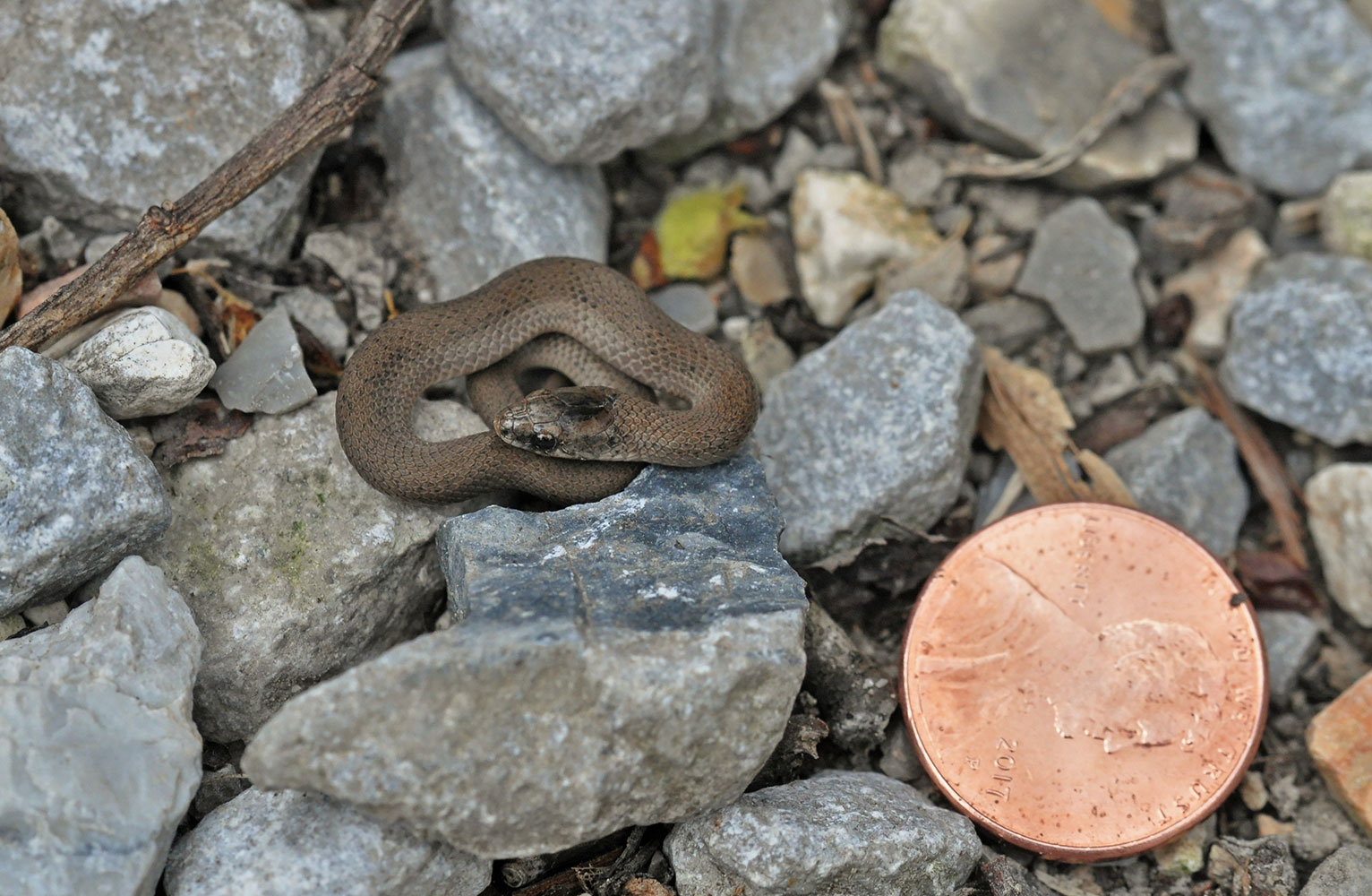
Smooth earth snake
Smooth earth snakes are among the smallest species of snake in North Carolina. They are a non-venomous species that preys on earthworms and soft-bodied invertebrates. This non-aggressive species is not a threat to humans or pets.
Salamanders
These amphibians are considered keystone species and benefit an ecosystem by regulating food webs and secreting valuable micronutrients into the soil as they burrow underground. With permeable skin that makes them vulnerable to environmental threats, they are also an exceptional indicator of ecosystem health.
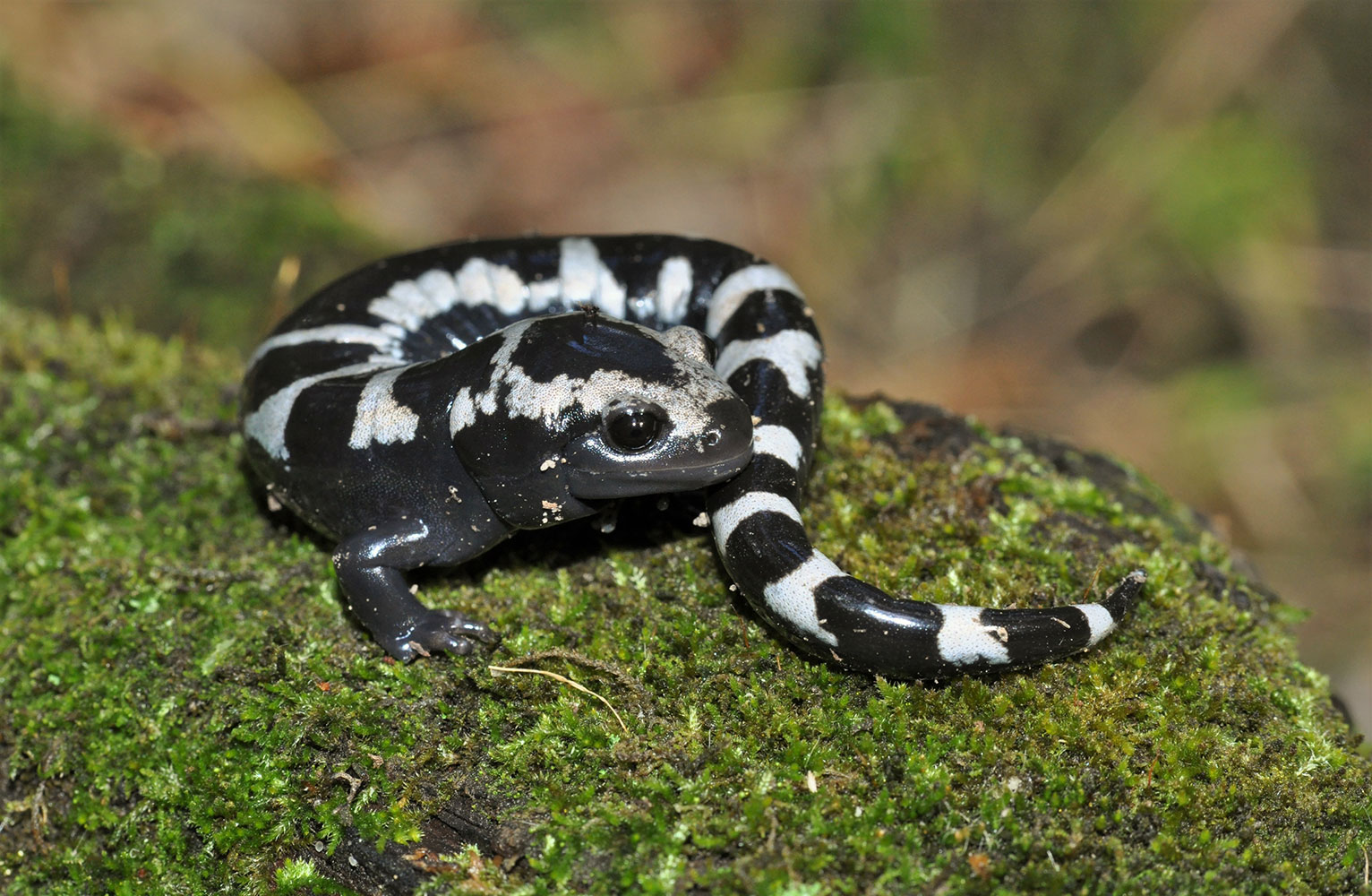
Marbled salamander
These short, stalky salamanders are often found in leaf litter in wooded areas near floodplain pools and ponds. They consume large amounts of terrestrial invertebrates but they will only consume live prey.
Insects
Bees and butterflies
Pollinators, like bees and butterflies, play the vitally important role of fertilizing plants. A healthy population of pollinators improves plant health, including food production, in an area.
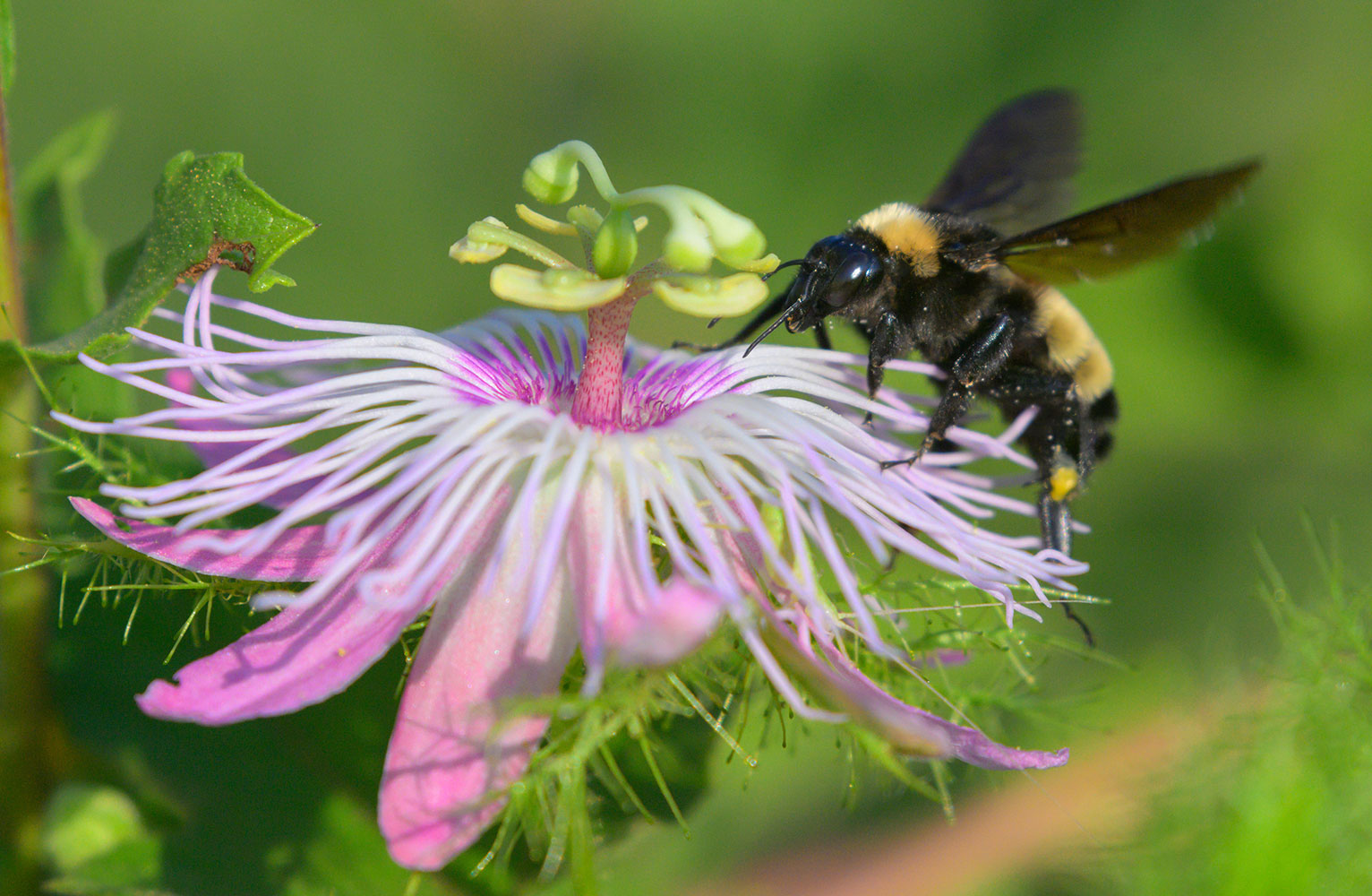 American bumblebee
American bumblebee
The American bumblebee is under review by the U.S. Fish and Wildlife Service for listing under the Endangered Species Act. They nest on the surface of the ground and forage in a variety of large open fields, seeking vetches and goldenrod.

Pearl crescent butterfly
One of the most common butterflies in the United States, pearl crescent butterflies are active and combative and will defend their territory from other species.
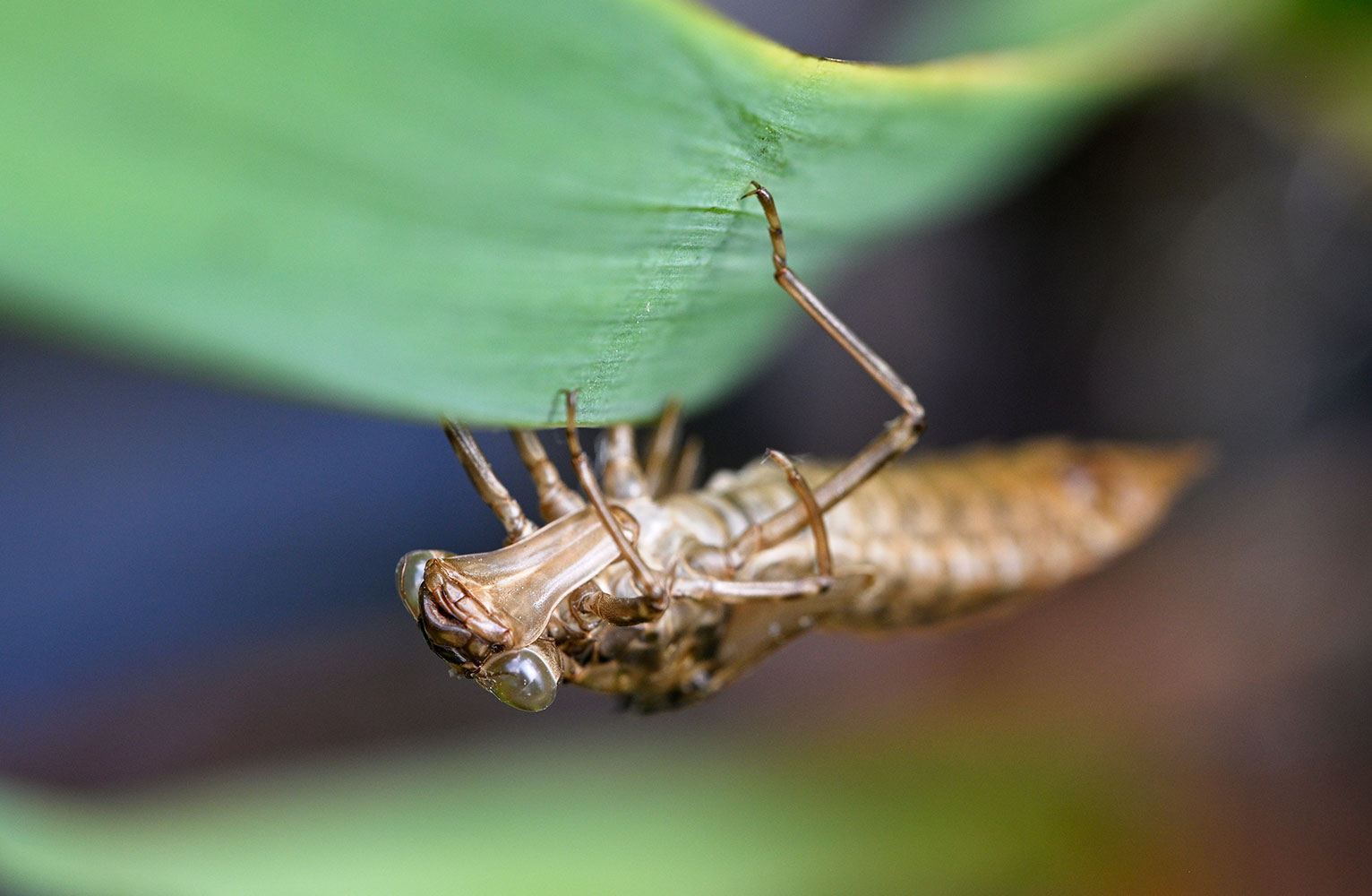
Dragonfly larvae
Dragonflies and their larvae play an important role in aquatic food webs, both as predators and prey. Because dragonflies require stable oxygen levels and clean water to survive, they are also reliable indicator species when evaluating the health of an ecosystem.

Great blue skimmer
The great blue skimmer nymph emerges as an iridescent adult. They are a biological indicator of water quality. They are also excellent predators with an expandable mandible for capturing prey.
The NC Wildlife Resources Commission and the Greensboro Science Center are funding the Stinking Quarter Tributary restoration project through several grants to the UNC Institute for the Environment.
(Photo credits: Adobe Stock)
Related Stories









 American bumblebee
American bumblebee




